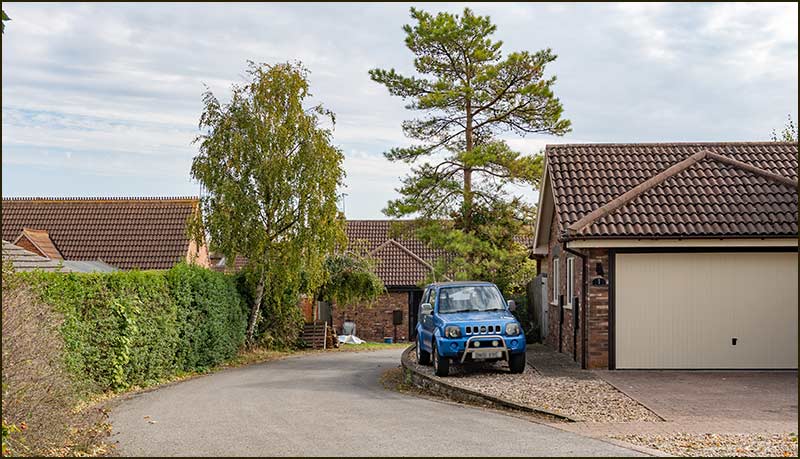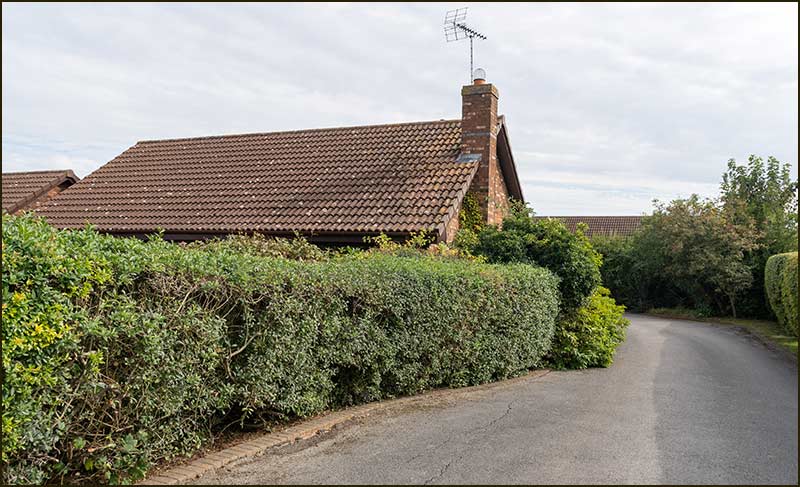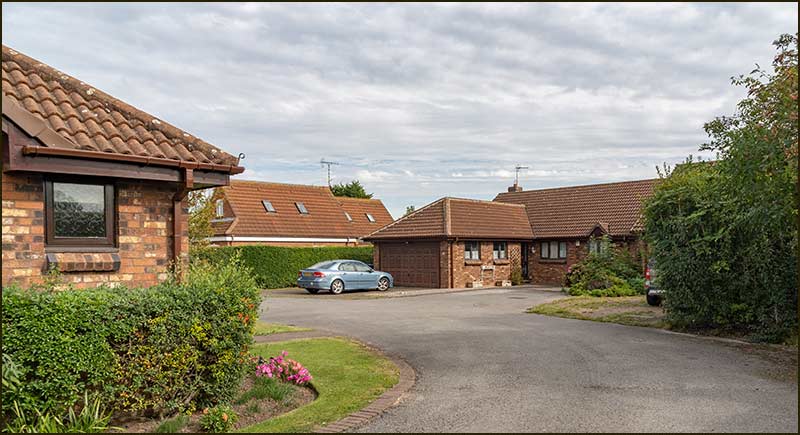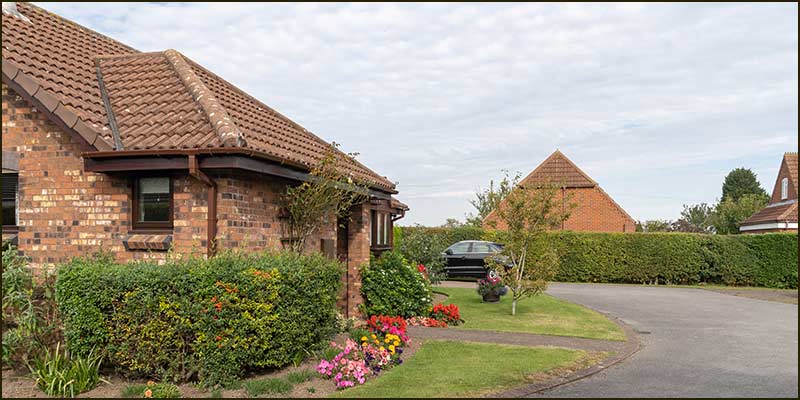Cropwell Bishop Streets: — Etheldene (3-2-21)

The vast majority of the 38 streets in Cropwell Bishop are named after people. Most of the rest are named after places. Just three have names that fit into neither category, they being Fern Road, Swab’s Lane and Etheldene.
The first two remain mysterious, but Etheldene can be explained – at least, partially.
Just to be clear, there was never a Mr, Mrs or Miss Etheldene, and there is no local village, stream or hill of that name. Even so, members of the Parish Council would have had a fairly simple task in choosing the name – particularly the older members with a good memory.
We need to look at the history of Church Street. At the northern end of the street, where there is a double bend before it becomes Cropwell Butler Road, there was once a row of cottages. Below is a photo of them not long before they were demolished.
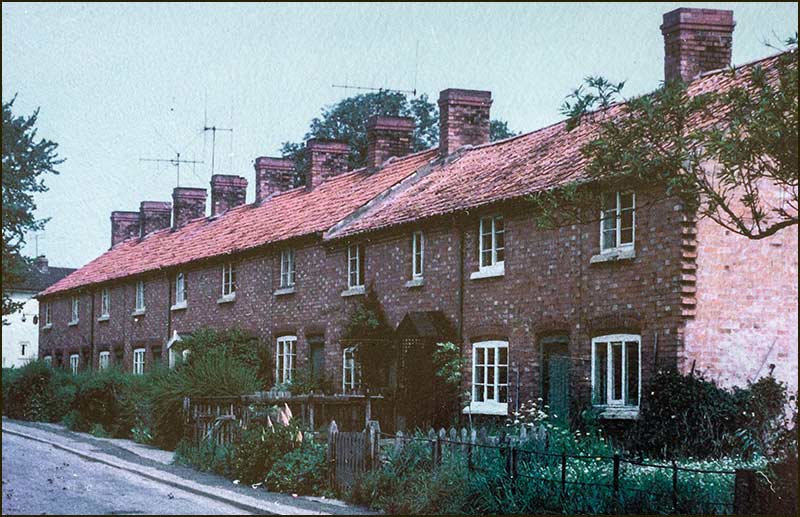
There were 10 homes in total. They were all the same size with a kitchen, sitting room and 2-bedrooms. Room heating was from open coal-fires downstairs and upstairs but since coal was expensive, lighting a fire in a bedroom would have been rare indeed.
With that in mind, it is interesting to note that in 1911, whilst most homes had 4 or less people living in them, two homes had 5 and one house was home to a family with 7 children under the age of 12. This family had also lost 2 children in infancy.
This row of cottages was built in the mid 1800s. At that time there would have been fields and orchards behind the houses – although their view might have been obscured by the wash-house, coal-house and outside toilet.
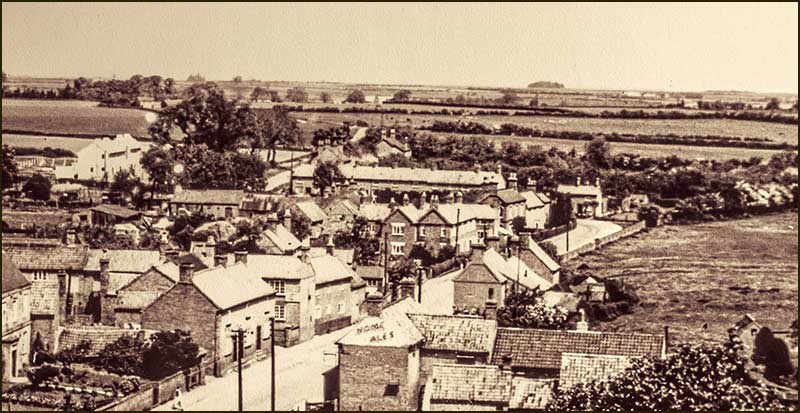
They were probably built by Cropwell Bishop builder, David Salvin, who lived in the village from 1830 to 1919, and were initially known as Salvin’s Row, being so named in census reports up to 1911.
The name may have derived from the builder, but it seems more likely it was from other members of the Salvin family because they owned the cottages. They were also known as Bottom Row by local people.
But you may wonder, what is the connection between these cottages and Etheldene, the street.
The 1911 census is still the most recent one available: the “100-year rule” means that the 1921 census will not be released until 2022.
However, in 1939, an “English and Wales Register” was compiled – a sort of mini-census listing all homes and occupants. In this list, the cottages were referred to as “Etheldene Cottages”: they had been renamed.
This name change suggests that at some point between 1911 and 1939, the cottages were acquired by the Heaselden family. It would have been only natural for them to want to dispose of the previous name, Salvin's Row.
From the evidence we have, we can hazard a guess on the date of the change.
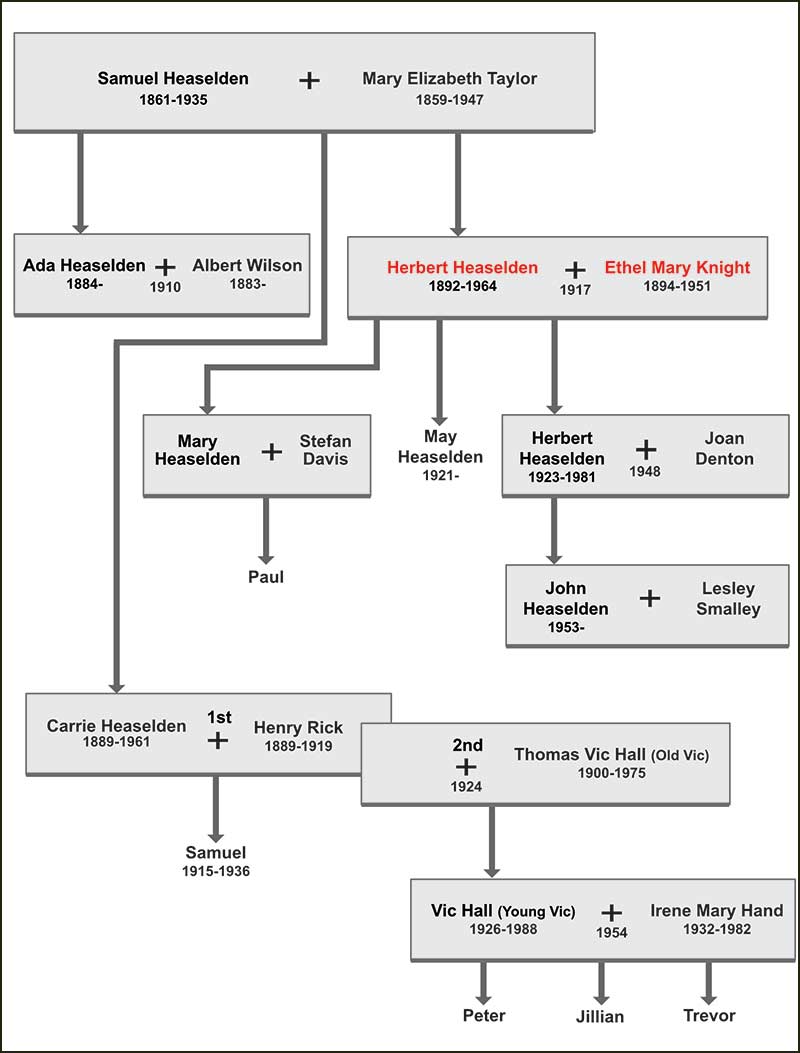
During most of those years, Samuel Heaselden was the senior member of the family and, I assume, most acquisitions would have been in his name. Yet I have seen no evidence that the cottages were ever called Heaselden Cottages.
In 1935, Samuel died and Herbert took over, and I think that was when Herbert bought the cottages and renamed them. The name he chose is clearly associated with his family, in particular his wife: her name being Ethel Heaselden. Etheldene is undoubtedly derived by merging Ethel and Heaselden.

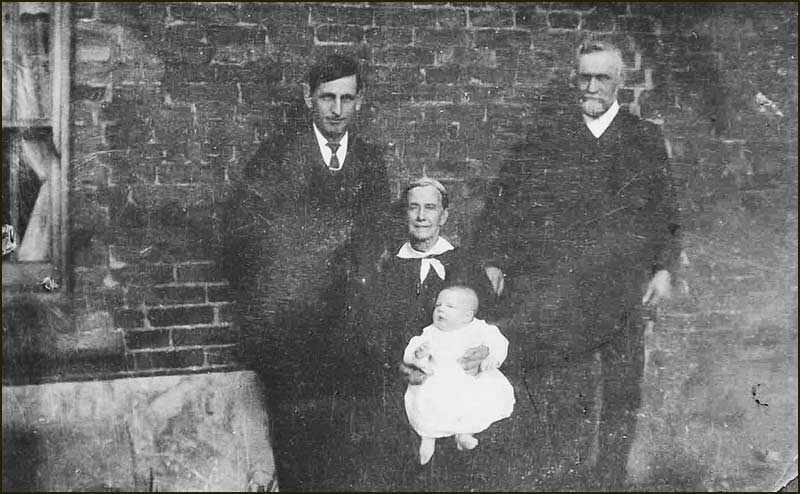
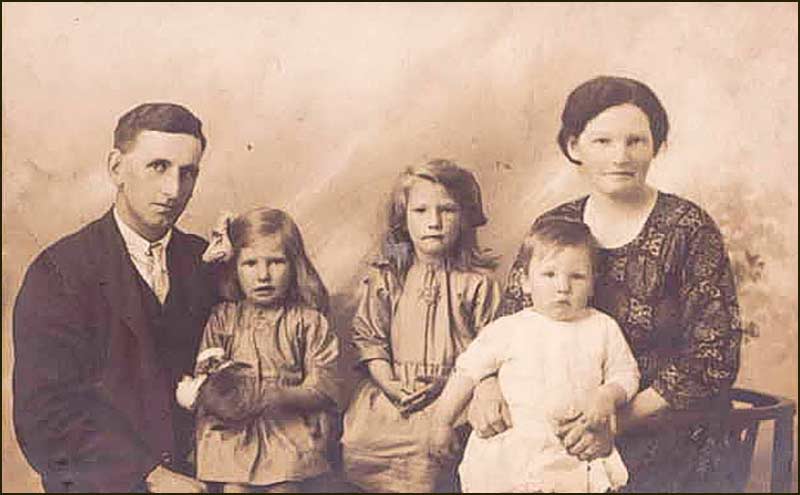
So, we have a good understanding of where the name Etheldene came from, but now you will be wondering how it become associated with a street 100m away.
The early 1970s was a time of rapid growth in Cropwell Bishop and hundreds of new houses were built. It was also a time when people realised that the days of “2-up and 2-down plus an outside toilet” had come to an end – and this included Etheldene Cottages.
So, in the early 1970s Etheldene Cottages were demolished and the name of Etheldene disappeared from the village – at least for a while.
If you compare a map of this part of Cropwell Bishop in the 1960s with a satellite view today, you will see that the land now occupied by Etheldene (street) was partly woodland. In fact, the eastern end was an orchard.
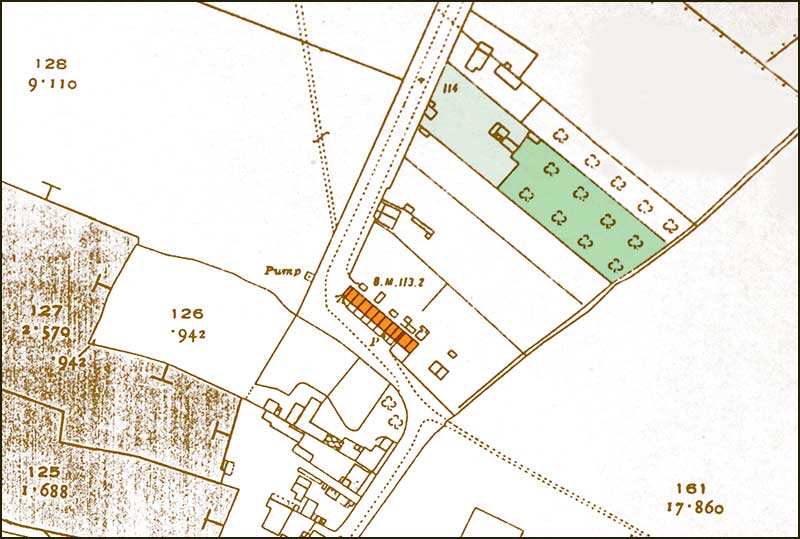
The cottages are shown in red and the eventual site of Etheldene (street) is shown in green.
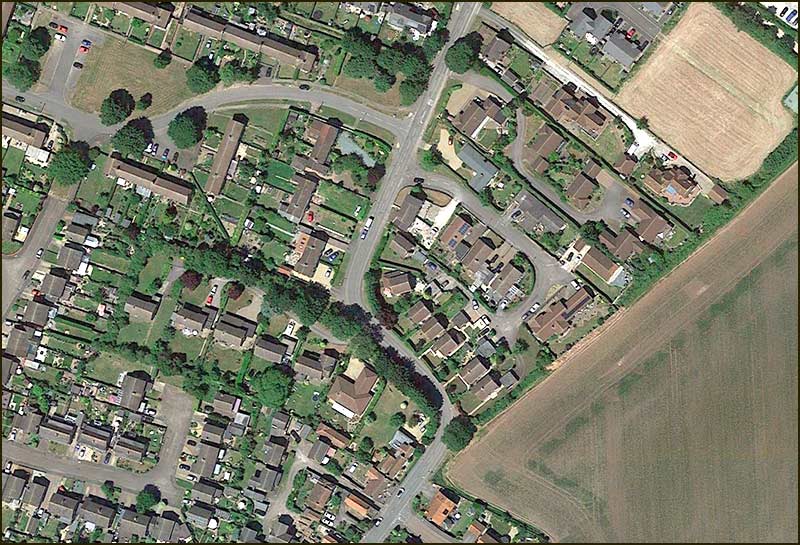
In the 1920s, this land (all the green area on the map) was owned by a man named Harry Mitchell. Harry was a “pan man”. In other words, his job was to empty the waste in outside toilets.
If ever you find yourself yearning for the slower pace of life of a century ago, it is worth remembering that there were many aspects of everyday life that were far less attractive than today.
By the 1930s, Harry's skills became less in demand as more and more people installed WCs in their homes.
It was in 1936 that the Truswell family took over this land and established a woodyard there. You can see two buildings that were part of the business in the photo below.

In the mid 1970s the Truswell family moved on but it was not until the late 1980s that the land was given a new lease of life – as the site for new bungalows.
By 1989 people were moving in and the street needed a name.
It is easy to imagine an older councillor at a Parish Council Meeting, proposing Etheldene as a suitable name. For the previous 20 years they had been happily choosing the names of past landowners for new streets in the village, and this would blend in well with that policy.
Whilst Etheldene is not strictly the name of someone, to those in-the-know, it does commemorate the contribution of the Heaselden family to the prosperity of Cropwell Bishop throughout the 20th Century.
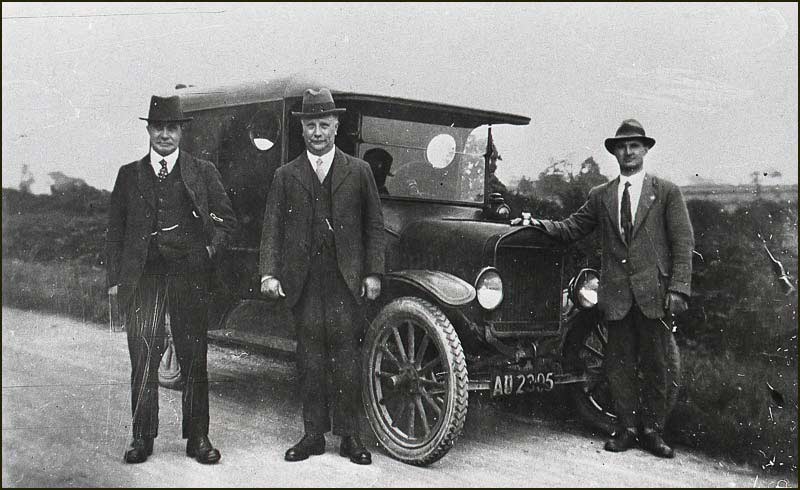
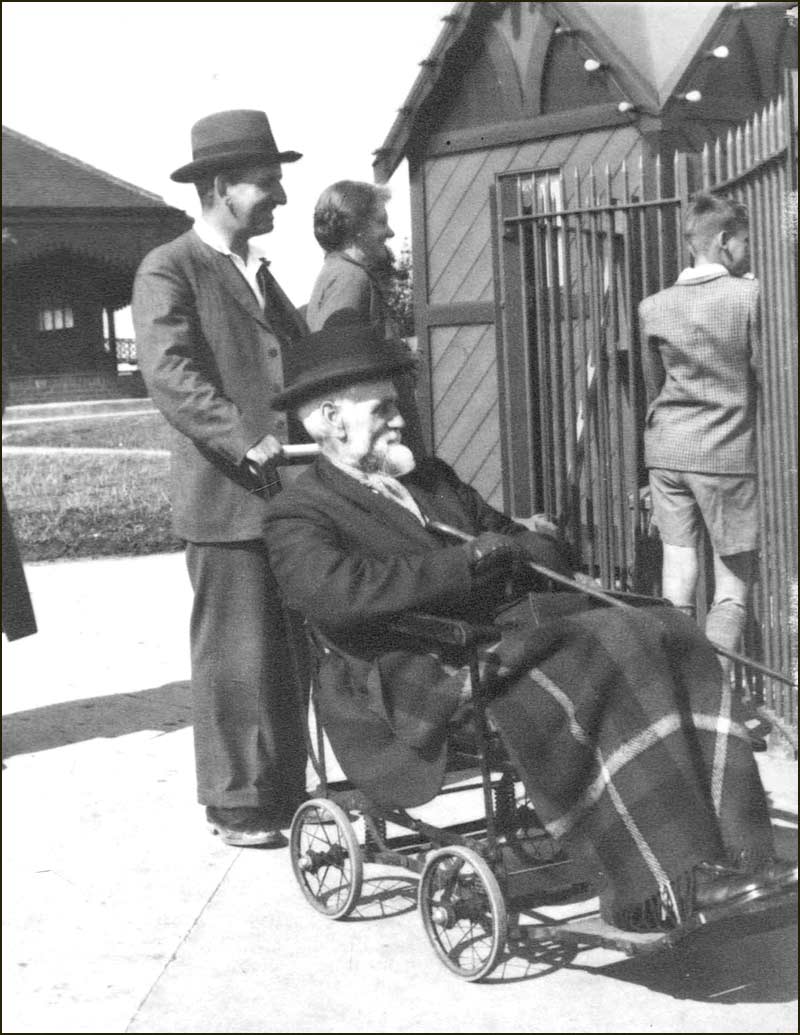

Etheldene is one of a handful of streets in Cropwell Bishop with names that a visitor might not associate with a street. Roads, Lanes and Closes are obviously streets, but you can't say the same of Hoe Nook, The Maltings and Etheldene.
Then again, they add interest to the addresses in our village – a bit of spice you might say.
Tony Jarrow
Note:
Thanks to Anne Terzza, Pam Barlow, Alan Hemsley, Godfrey Allison, Trish Allison, Sonny Truswell and Lol Simpson for their help with this article.

Etheldene in 2020
